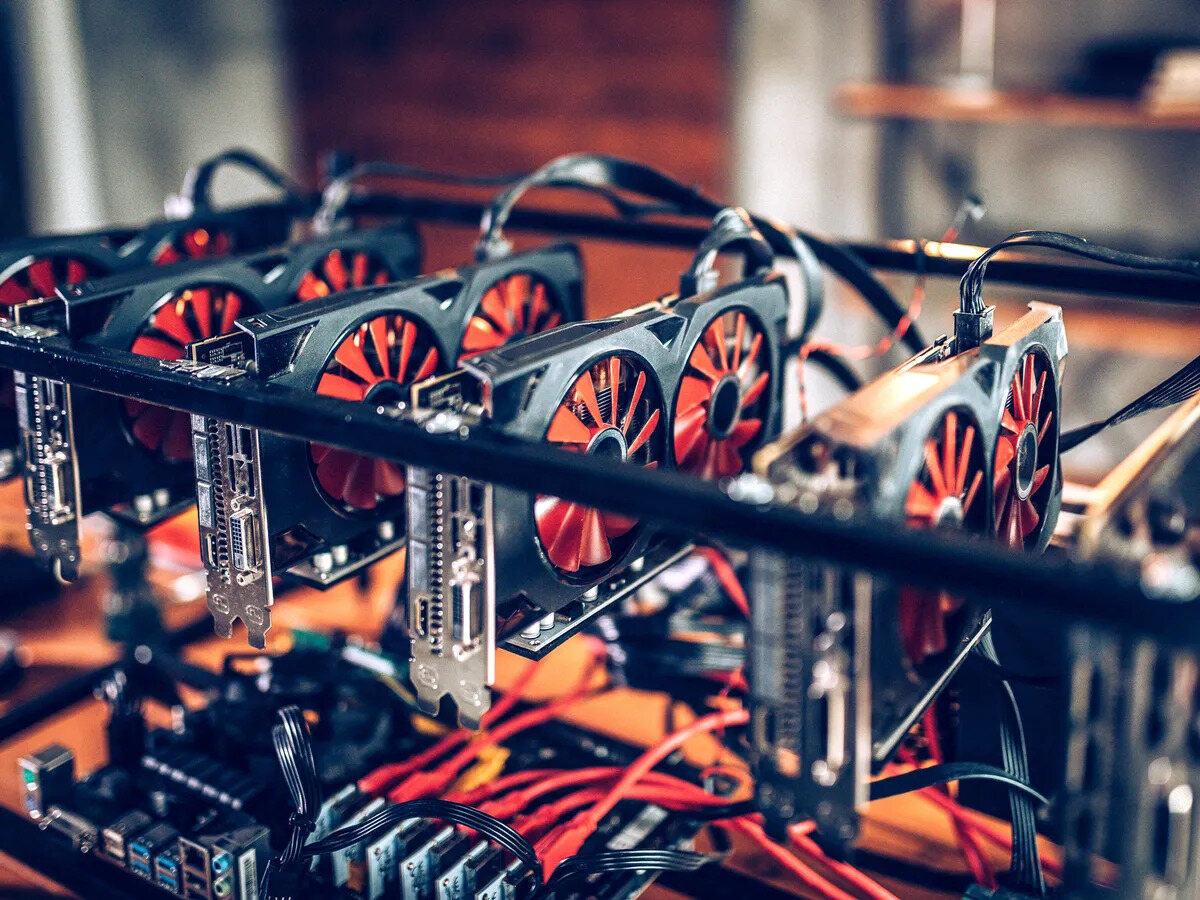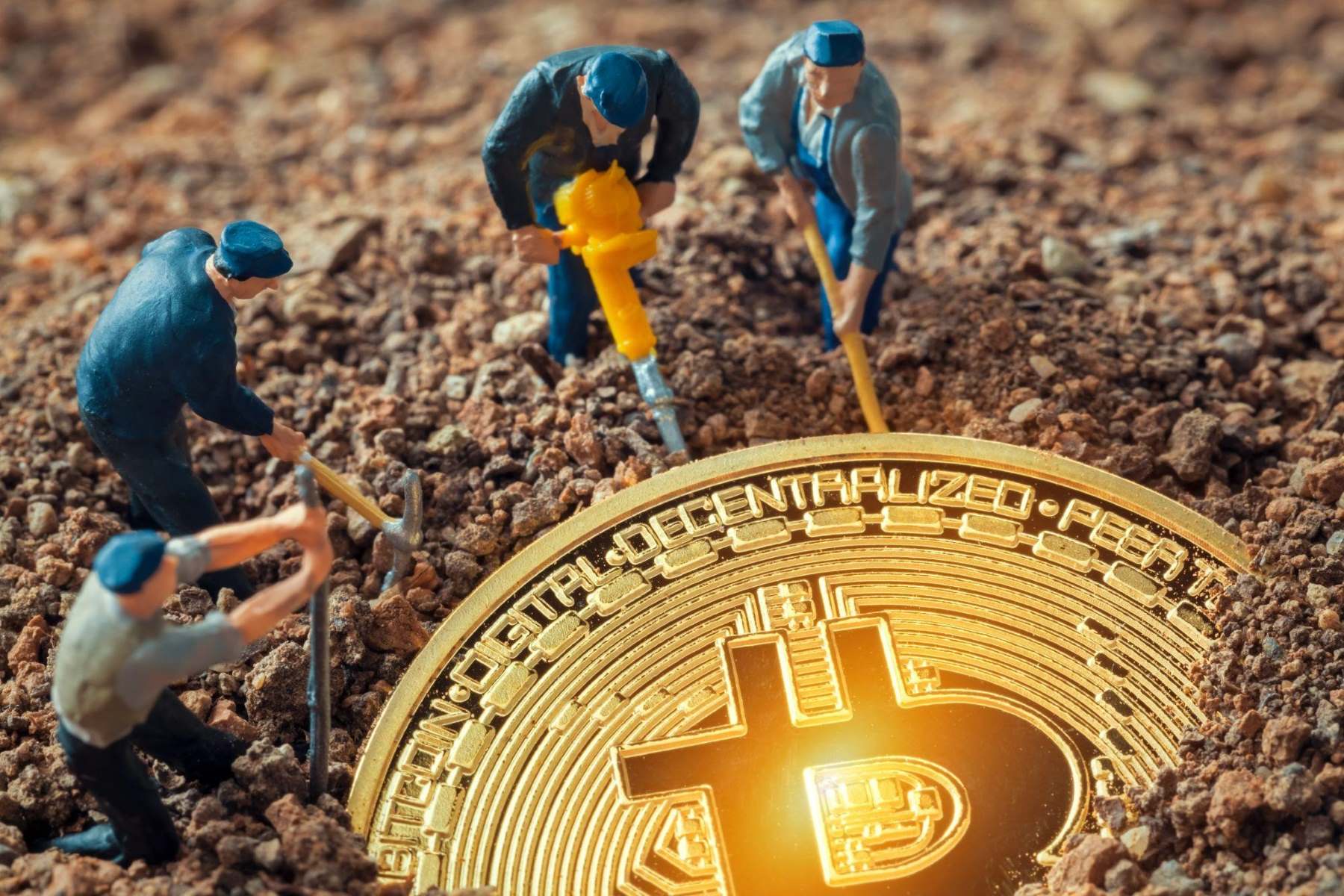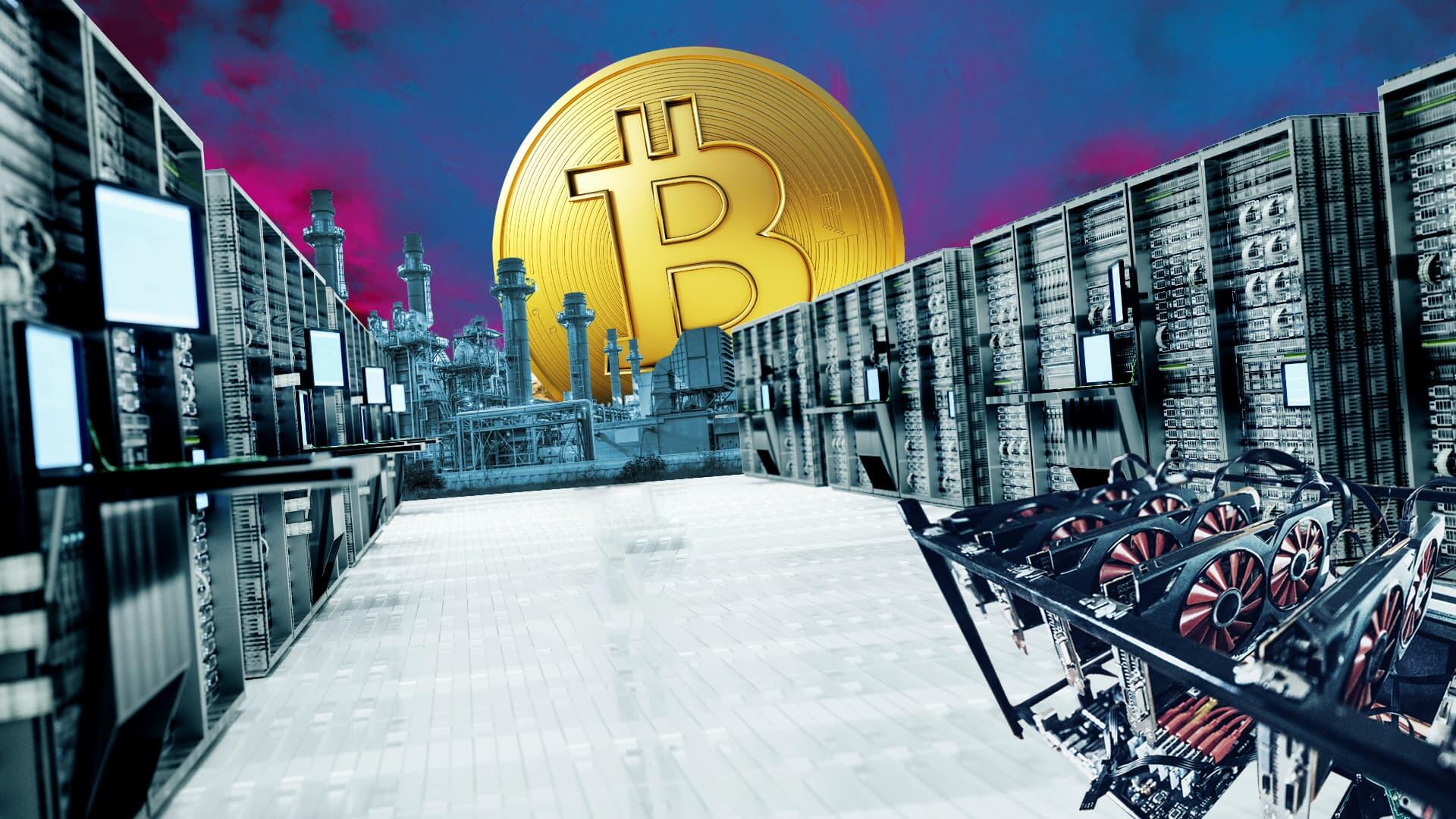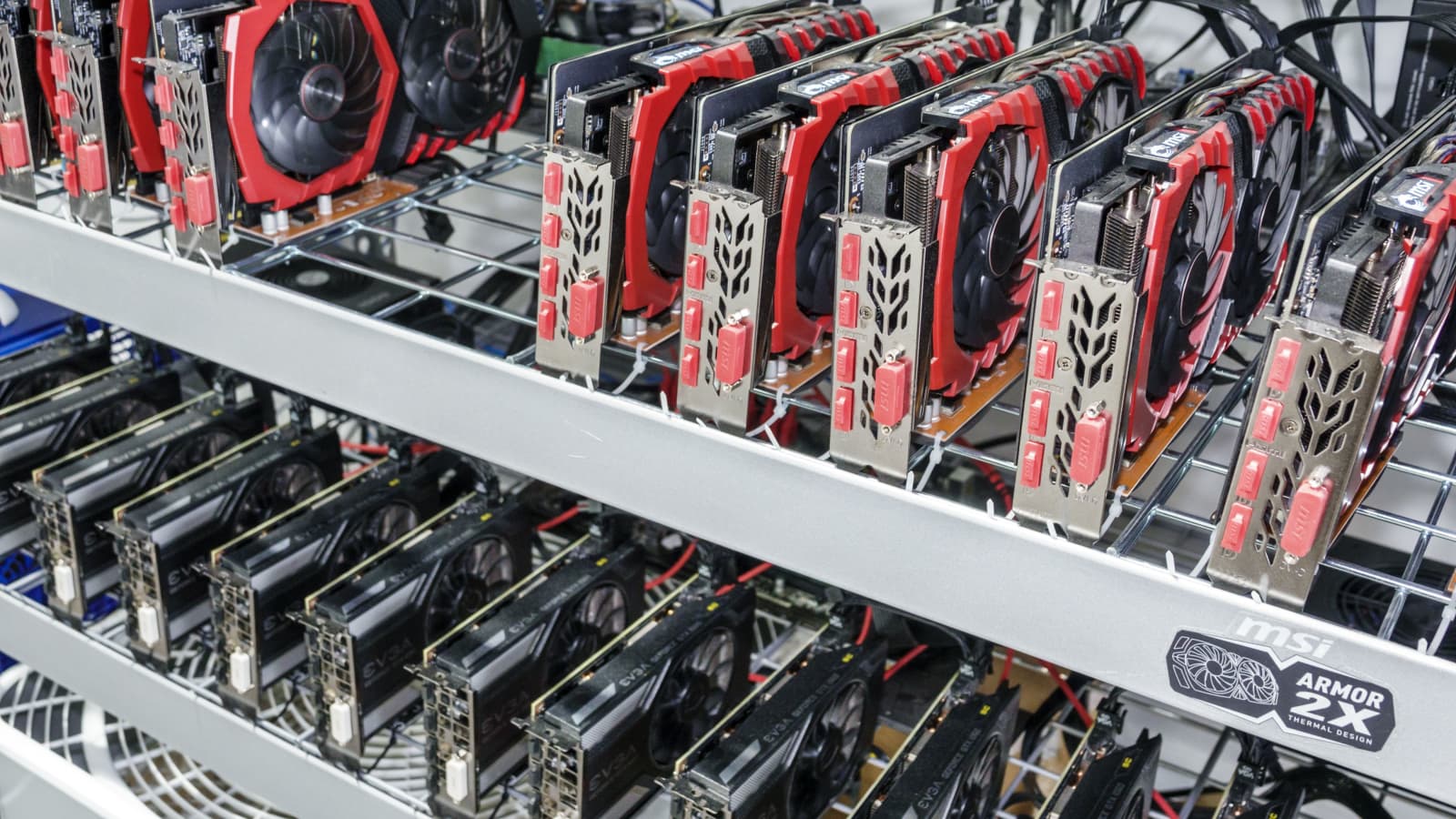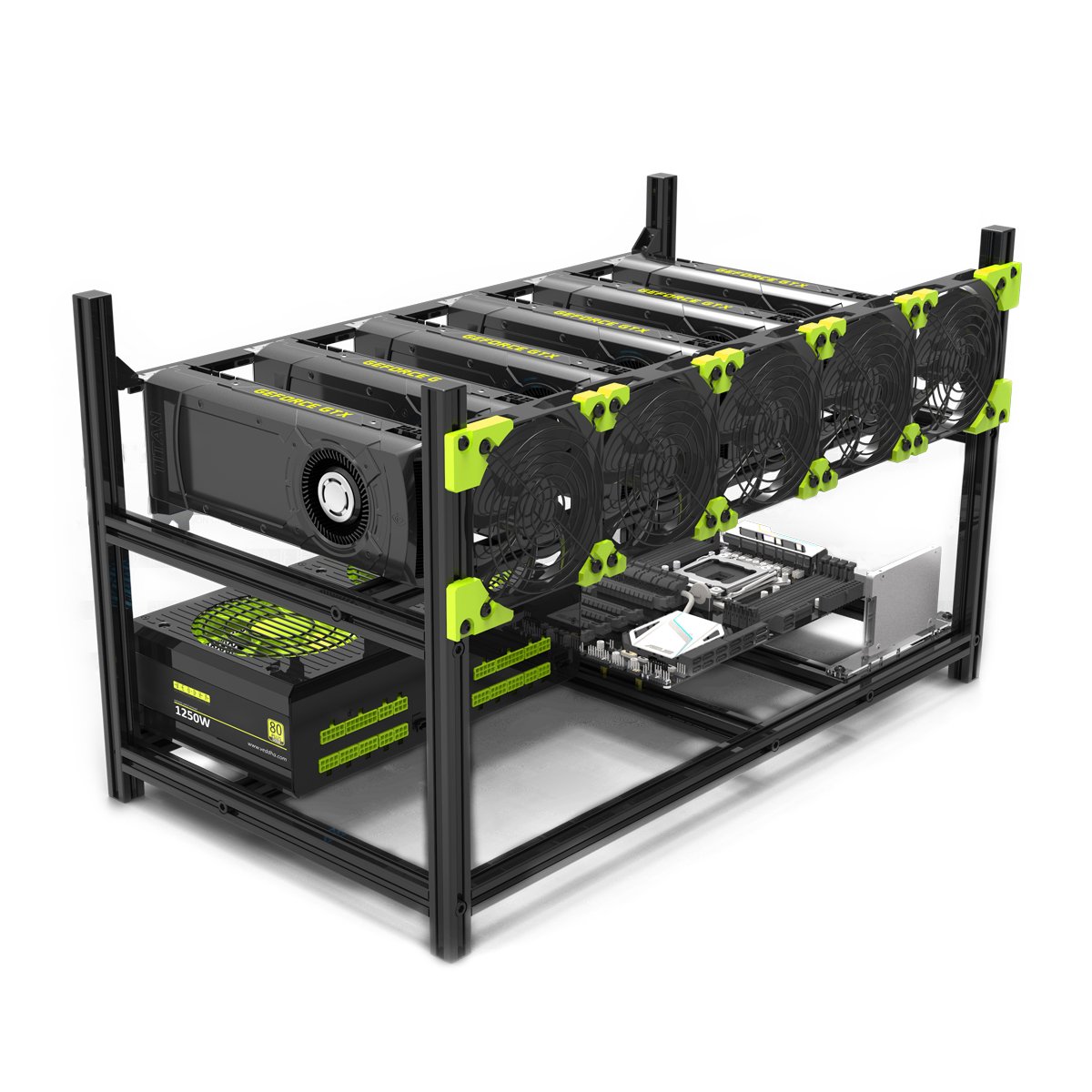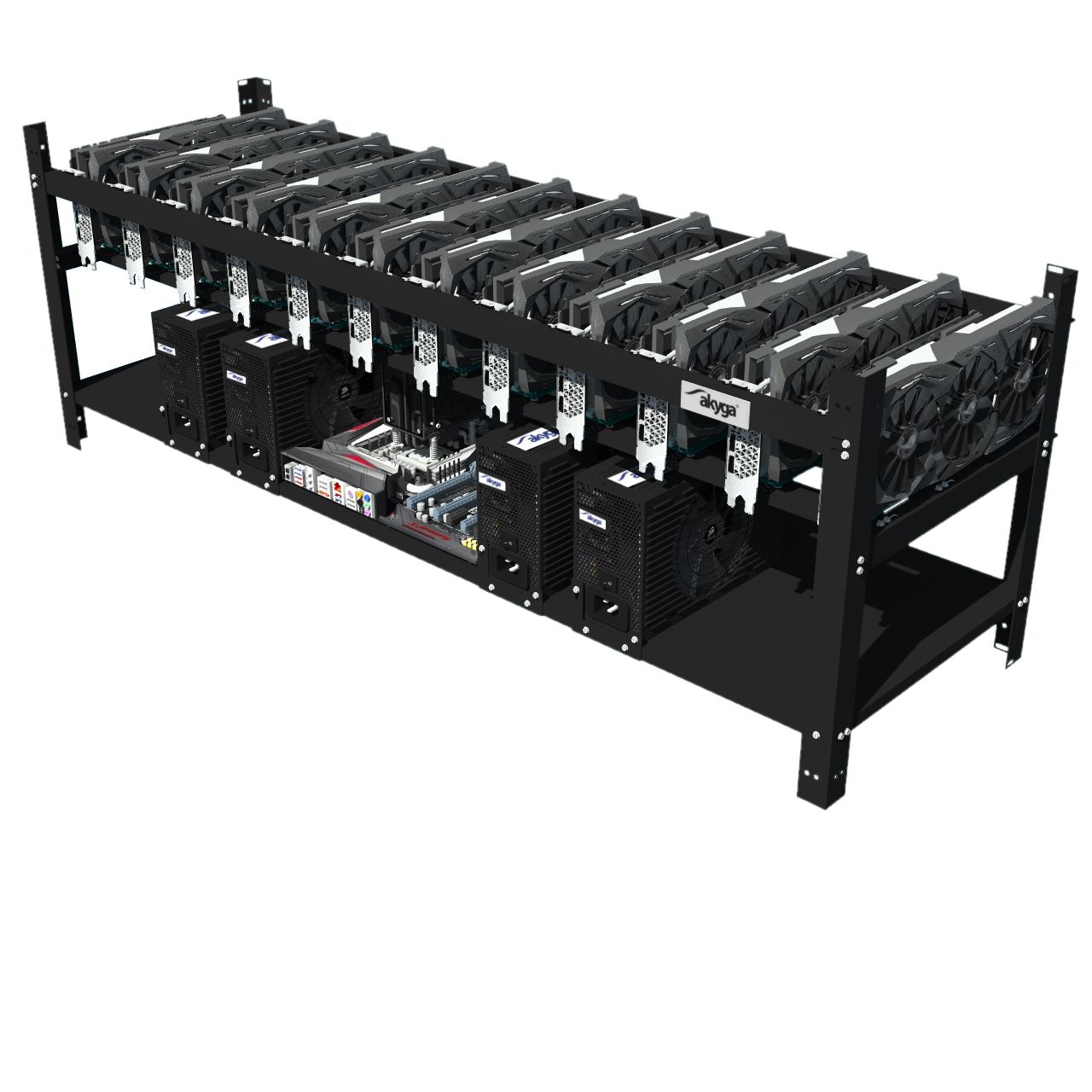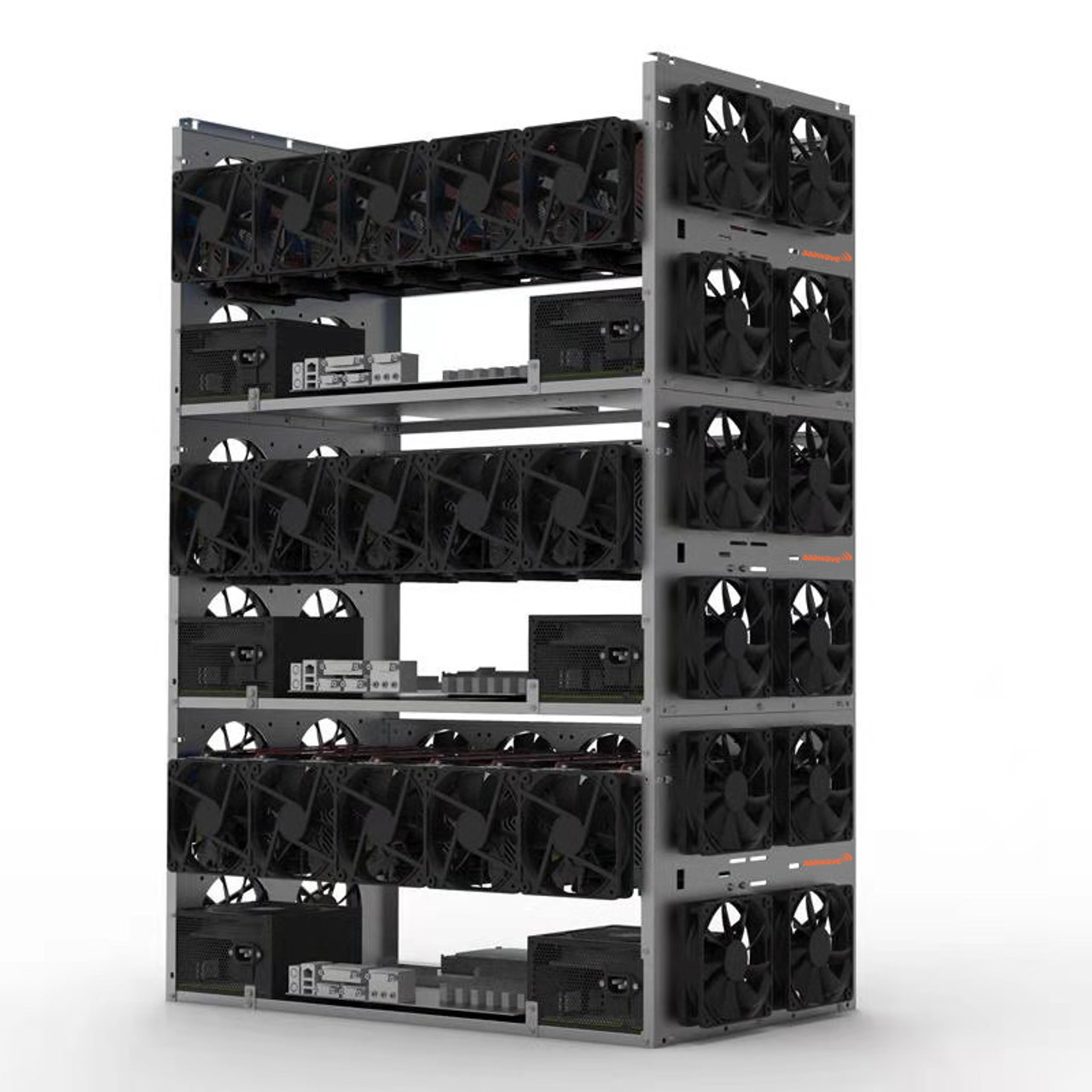Introduction
Welcome to the world of cryptocurrency mining! With the rising popularity of cryptocurrencies like Bitcoin and Ethereum, more and more people are becoming interested in mining as a way to generate income or acquire new digital assets. A crucial step in getting started with mining is building your own mining rig, a powerful computer specifically designed to mine cryptocurrencies.
But what exactly is a crypto mining rig? How much does it cost to build one? Is it still a profitable venture? In this article, we’ll explore these questions and provide you with a comprehensive guide to understanding the world of crypto mining rigs.
Crypto mining rigs are essentially high-performance computers equipped with specialized hardware that can perform complex calculations required to mine cryptocurrencies. These rigs are built to efficiently solve mathematical problems, allowing miners to validate and secure transactions on the blockchain network.
The components of a mining rig include a motherboard, CPU, GPU (Graphics Processing Unit), RAM, storage, power supply unit (PSU), and cooling system. Each component plays a crucial role in ensuring optimal mining performance and reliability.
Now, let’s dive into the various components that make up a mining rig and explore their costs.
What is a Crypto Mining Rig?
A crypto mining rig is a specialized computer system that is designed and optimized for the process of mining cryptocurrencies. Mining rigs are built to solve complex mathematical problems, which are necessary for verifying and recording transactions on a blockchain network.
The main purpose of a mining rig is to generate new coins or tokens by performing the calculations required to validate transactions and add them to the blockchain. This process, known as mining, involves solving complex algorithms and competing with other miners to be the first to find a valid solution. Once a solution is found, the miner is rewarded with a certain amount of cryptocurrency.
Mining rigs are typically composed of several key components:
- Motherboard: This is the main circuit board that connects all the components of the rig and allows them to communicate with each other.
- Central Processing Unit (CPU): The CPU is responsible for executing the instructions and calculations necessary for mining.
- Graphics Processing Unit (GPU): The GPU is the most crucial component of a mining rig. It is responsible for performing the complex mathematical calculations required for mining cryptocurrencies.
- Random Access Memory (RAM): RAM is used to temporarily store data that is being processed by the CPU and GPU.
- Storage: A storage device is needed to store the operating system, mining software, and other necessary files.
- Power Supply Unit (PSU): The PSU is responsible for providing power to all the components of the mining rig.
- Cooling System: Due to the high computational power required for mining, mining rigs generate a significant amount of heat. A robust cooling system, including fans or liquid cooling, is necessary to prevent overheating and ensure stable performance.
By combining these components, miners can create a powerful and efficient mining rig capable of solving complex calculations and generating cryptocurrency rewards.
Now that we understand what a crypto mining rig is, let’s delve into the individual costs of each component.
Components of a Mining Rig
A mining rig is composed of several essential components that work together to efficiently mine cryptocurrencies. Each component plays a crucial role in the mining process and contributes to the overall performance and profitability of the rig. Let’s take a closer look at these components:
- Motherboard: The motherboard is the main circuit board that connects and allows communication between all the components of the mining rig. It provides power and facilitates data transfer between the CPU, GPU, RAM, storage devices, and other peripherals.
- Central Processing Unit (CPU): Although the CPU is not the primary component responsible for mining cryptocurrencies, it is essential for running the operating system and managing tasks related to mining software. A multi-core CPU with a high clock speed is recommended for optimal performance.
- Graphics Processing Unit (GPU): The GPU is the most crucial component of a mining rig. It is responsible for performing the complex mathematical calculations required for mining cryptocurrencies. When choosing a GPU, factors such as processing power, memory capacity, and energy efficiency should be considered. Popular choices for mining include graphics cards from NVIDIA (such as the GeForce GTX series) and AMD (such as the Radeon RX series).
- Random Access Memory (RAM): RAM is used to temporarily store data that is being processed by the CPU and GPU. Sufficient RAM is crucial to prevent performance bottlenecks during mining. It is recommended to have at least 8GB of RAM, though more may be beneficial for certain mining algorithms.
- Storage: A storage device, such as a solid-state drive (SSD) or a hard disk drive (HDD), is needed to store the operating system, mining software, and other necessary files. An SSD is preferred for faster boot times and quicker access to files.
- Power Supply Unit (PSU): The PSU is responsible for providing power to all the components of the mining rig. It is crucial to choose a high-quality PSU with sufficient wattage to power the rig and ensure stable operation. Modular PSUs are recommended for better cable management.
- Cooling System: Due to the high computational power required for mining, mining rigs generate a significant amount of heat. Proper cooling is essential to maintain the longevity and stability of the components. This can be achieved through the use of fans, heatsinks, or liquid cooling solutions.
By carefully selecting and configuring these components, miners can build a powerful and efficient mining rig that can mine cryptocurrencies effectively. However, it is important to consider the costs of each component before diving into building a mining rig. In the next section, we will break down the costs associated with each component to give you a better understanding of the financial investment required.
How Much Does Each Component Cost?
The cost of building a mining rig can vary greatly depending on the specific components chosen and their availability. However, we can provide you with a general idea of the average costs associated with each component. It’s important to note that the prices mentioned here are subject to change and may differ based on factors such as location, brand, and market conditions.
- Motherboard: The cost of a mining rig motherboard can range from $100 to $300, depending on the brand and features.
- Central Processing Unit (CPU): A CPU suitable for mining typically costs between $50 and $200. However, you can save money by opting for a lower-end model that still meets your mining requirements.
- Graphics Processing Unit (GPU): GPUs are often the most expensive component of a mining rig. Depending on the model and brand, you can expect to pay anywhere from $200 to $800 per GPU. It’s worth noting that high-end GPUs with better mining performance tend to have higher price tags.
- Random Access Memory (RAM): The cost of RAM typically ranges from $50 to $150, with 8GB to 16GB being the recommended size for mining rigs.
- Storage: A solid-state drive (SSD) with a capacity of 120GB to 240GB is usually sufficient for a mining rig and costs approximately $50 to $100.
- Power Supply Unit (PSU): A reliable power supply unit with sufficient wattage can cost between $100 and $200. Choosing a high-quality PSU is crucial to ensure the stability and longevity of your mining rig.
- Cooling System: The cost of a cooling system will depend on the chosen method. Basic fan setups can range from $20 to $50, while more advanced liquid cooling solutions may cost upwards of $100.
Keep in mind that these prices are rough estimates and can vary based on factors such as brand, performance, and availability. It’s also worth noting that the overall cost of building a mining rig can be influenced by other factors such as the number of GPUs you plan to use and the cost of ancillary components such as risers, cables, and a mining case.
Now that we’ve covered the individual costs of each component, let’s break down the overall cost of building a mining rig in the next section.
Cost Breakdown for Building a Mining Rig
Building a mining rig involves several components, each with its own associated cost. To give you a better understanding of the financial investment involved, let’s break down the approximate costs for building a mining rig.
1. Motherboard: The cost of a mining rig motherboard can range from $100 to $300.
2. Central Processing Unit (CPU): A suitable CPU for mining typically costs between $50 and $200.
3. Graphics Processing Unit (GPU): The GPU is often the most expensive component. Depending on the model and brand, you can expect to pay anywhere from $200 to $800 per GPU.
4. Random Access Memory (RAM): The cost of RAM typically ranges from $50 to $150.
5. Storage: A solid-state drive (SSD) with a capacity of 120GB to 240GB is usually sufficient and costs approximately $50 to $100.
6. Power Supply Unit (PSU): A reliable PSU with sufficient wattage can cost between $100 and $200.
7. Cooling System: The cost of a cooling system will depend on the chosen method, ranging from $20 to $100 or more.
These are the basic components required for a mining rig. It’s important to note that these costs can add up quickly, especially if you are building a rig with multiple GPUs. Additionally, other expenses such as mining software, cables, risers, and a mining case should also be factored into your budget.
It’s essential to consider that the prices mentioned here are just estimates and can vary depending on factors such as the brand, location, and market conditions. Prices may fluctuate, so it’s a good idea to research and compare prices from different vendors before making any purchases.
Now that we’ve covered the cost breakdown, let’s move on to additional considerations to keep in mind when building a mining rig.
Additional Considerations
Building a mining rig goes beyond just the cost of the components. There are several additional considerations you should keep in mind to ensure a successful mining operation. Let’s explore some important factors to consider:
- Electricity Costs: Mining rigs consume a significant amount of electricity. It’s important to calculate and factor in the electricity costs associated with running your rig. High electricity costs can significantly impact your profitability.
- Mining Software: Choosing the right mining software is crucial for optimizing your mining rig’s performance. Research and experiment with different mining software options to find the one that suits your needs and offers the best efficiency and stability.
- Mining Pools: Joining a mining pool can increase your chances of earning a steady income. Mining solo might be challenging, especially for small-scale miners, due to increased competition. A mining pool allows you to combine your resources with other miners, increasing your collective mining power and sharing the rewards.
- Mining Algorithm: Different cryptocurrencies use different mining algorithms. Before building your rig, consider the specific algorithm used by the cryptocurrency you intend to mine. Some algorithms are better suited to certain GPUs, and mining profitability can vary depending on the algorithm’s difficulty level and the price of the mined cryptocurrency.
- Heat and Cooling: Mining rigs generate a significant amount of heat, which can lead to performance issues and reduced lifespan of the components. Ensure your mining rig is properly cooled with adequate ventilation, fans, or even liquid cooling solutions to maintain optimal performance and prevent thermal throttling.
- Future Upgrades: Technology evolves rapidly, and what may be a powerful mining rig today may become outdated in the future. Consider the scalability and upgradeability of your rig to adapt to changing mining requirements. Investing in components that allow for easy upgrades can save you money in the long run.
By considering these factors, you can maximize your mining rig’s efficiency, profitability, and longevity. It’s important to stay informed about new developments in the crypto mining industry and regularly evaluate and adjust your mining rig setup as needed.
Now that we’ve discussed additional considerations, let’s delve into the all-important question: is cryptocurrency mining still profitable?
Is Mining Still Profitable?
The profitability of cryptocurrency mining is a question that many aspiring miners often ask. The answer largely depends on various factors, such as the cost of electricity, the price of the mined cryptocurrency, the mining difficulty, and the efficiency of your mining rig. Let’s explore some key points to consider when determining the profitability of mining:
1. Mining Difficulty: Mining difficulty refers to the measure of how hard it is to solve the mathematical algorithms required for mining. As more miners enter the network, the difficulty increases, making it more challenging to mine new coins. Higher difficulty levels can impact your mining rewards and profitability.
2. Electricity Costs: Electricity costs play a significant role in determining the profitability of mining. The more energy your mining rig consumes, the higher your operating costs. It’s crucial to calculate the electricity usage and compare it to the value of the cryptocurrency being mined to ensure that it remains profitable.
3. Cryptocurrency Market Price: The price of the mined cryptocurrency directly affects mining profitability. If the price is low, it may not offset the costs of electricity and other expenses associated with mining. However, if the price increases, it can significantly boost your mining profits. Monitoring market trends and being aware of price fluctuations is essential for gauging profitability.
4. Efficiency of Mining Rig: The efficiency of your mining rig plays a vital role in determining profitability. An energy-efficient rig can reduce electricity costs, while a more powerful rig can enhance mining capabilities. Optimizing your mining rig’s performance through proper hardware selection, software optimization, and cooling can improve profitability.
5. Mining Pools: Joining mining pools can increase your chances of earning a steady income as it allows you to combine resources with other miners and share rewards. Mining pools can help offset the fluctuations in mining difficulty and increase the frequency of receiving rewards.
It’s important to conduct thorough research and evaluate these factors before embarking on a mining venture. Mining profitability can change over time, and it’s crucial to regularly analyze the costs and potential rewards associated with mining.
Keep in mind that the cryptocurrency market is highly volatile, and mining profitability can vary greatly. It’s advisable to stay informed about industry trends, monitor changes in mining difficulty and market prices, and adapt your mining strategy accordingly.
Having considered the factors that impact mining profitability, let’s conclude our exploration of crypto mining rigs.
Conclusion
Building a mining rig can be an exciting venture for those looking to get involved in cryptocurrency mining. However, it’s important to understand the key components, costs, and considerations before diving in.
In this article, we explored what a crypto mining rig is and discussed the various components required, such as the motherboard, CPU, GPU, RAM, storage, PSU, and cooling system. We also examined the estimated costs associated with each component, which can vary based on factors like brand, location, and market conditions.
Additionally, we highlighted the importance of considering additional factors like electricity costs, mining software, mining pools, mining algorithms, and cooling systems to optimize the performance and profitability of your mining rig.
While mining can offer a potential source of income, it’s crucial to evaluate the mining difficulty, electricity costs, cryptocurrency market prices, efficiency of your rig, and other factors to determine whether mining remains profitable. It’s vital to stay informed about industry trends and regularly reassess your mining strategy.
Ultimately, building and operating a successful mining rig requires careful planning, research, and ongoing maintenance. It’s important to weigh the financial investment, potential returns, and risks associated with mining before making any decisions.
Armed with this knowledge, you are ready to embark on your journey into the world of crypto mining rigs. Remember to stay informed, adapt to market changes, and continuously optimize your rig for optimal performance and profitability. Good luck with your mining endeavors!







